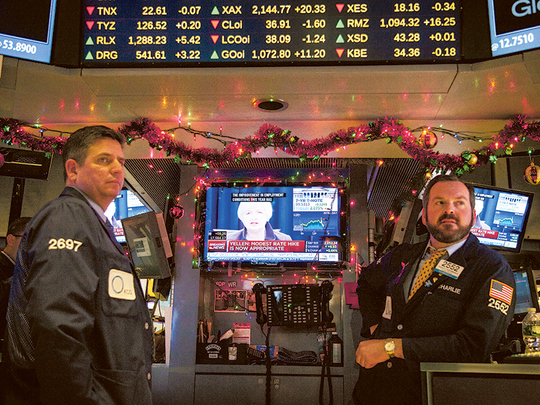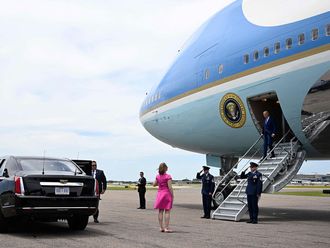
Dubai: GCC States including the UAE, Saudi Arabia, Kuwait and Bahrain have raised interest rates on Thursday by 25 basis points following the Fed rate on Wednesday.
While GCC countries such as Saudi Arabia, Bahrain, Qatar, Oman and the UAE have their currencies pegged to the US dollar, Kuwait’s dinar is linked to a basket of major currencies dominated (about 70 per cent) by the dollar.
GCC central banks follow the Fed lead in interest rates despite the sharp decline in oil prices and forecasts of a sluggish economic growth.
“Global oil prices have plummeted since the second half of 2014. Lower oil prices also translate into lower liquidity flows largely in the form of deposits to the local banking systems and the local interest rates have been going up for the past few months for some of the key markets we follow. In addition to the changing liquidity conditions we expect the increasing fed rates to further contribute to the increasing interest rates in the region,” said Timucin Engin, Director, Financial Services Ratings, Standard & Poor’s Ratings.
Overall, analysts expect a visible increase in the cost of funding for the banks this year, while the banks will potentially reflect this in their loans, meaning the cost of new loans to the regional corporates will also continue to increase.
“Monetary conditions in the GCC are set to tighten on the back of external and domestic factors. Liquidity has tightened in 2015 as government deposits have dropped 21 per cent year on year in September. This could be exacerbated by US Fed rate hike,” said Carla Slim, Economist, Mena, Standard Chartered.
Confidence-sensitive debt
On the back of increased deposit drawdown by governments and government related entities to cover the revenue gap resulting from lower oil prices, GCC banks will be forced to seek external funding from more expensive and confidence-sensitive debt and sukuk markets.
“Tightening liquidity and slower demand for credit is already reflected in credit growth across the region. In the UAE bank credit growth is projected to average between 3 per cent to 5 per cent annually for 2015 and 2016 from around 9 per cent for 2014,” said Nitish Bhojnagarwala, an Assistant Vice President at Moody’s.
Decline in loan growth and higher cost of funds are expected to reflect on banking sector profitability in the region. “Overall for the GCC banks for 2016, we expect the relative weakness in deposits to continue, credit growth to slow down a bit more, and more importantly we expect the credit losses to visibly increase which means it will be difficult for the banks to maintain their current level of profitability,” Engin.
But the impact of rate hike could vary on banks depending on their funding profile. Banks with higher low cost CASA (current and savings account) deposits and Islamic deposits in their funding are less vulnerable.
“Retail lending rates are likely to go up, albeit slowly given the severe price competition in the market. However, even with 2 or 3 expected rate hikes in the future, we will still live in a relatively low interest rate environment giving customers the opportunity to borrow at reasonable rates,” said Suvo Sarkar, Senior Executive Vice President & Group Head — Retail Banking and Wealth Management.












